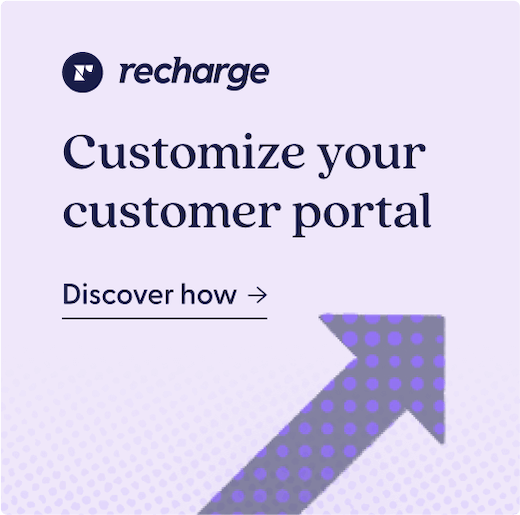Much of the success and failure of any venture is determined by the first few business decisions an entrepreneur makes. Here at Recharge, we have seen people become unbelievably successful, while others have struggled to grow their subscription Shopify business. After speaking with our most successful clients we have come to the conclusion that there are a few essential things one should consider when starting a Shopify subscription service.
Should I use a Subscription Model?
If you have been considering a subscription service ask yourself if your customers are already buying your product on a recurrent basis. If so, offering a recurring billing through Shopify will likely advance your profitability. However, if you analyze your customers buying habits on Shopify and do not observe repeat purchases of a specific product, then a subscription model is inadvisable.
The next thing to consider is the role you want your subscription service to play for your users. If subscriptions are not your main business, but rather a means to upsell, then you need to evaluate the potential volume of sales made through subscription. On average shops convert anywhere from 5–20% of users to subscription, depending upon the product and discount offered. Typically this means you should to be producing upwards of two thousand dollars a month in revenue to make subscription a viable business strategy.
Is Your Product Consumed?
Any product that can be depleted and replaced is a wise choice to sell on a recurring basis through Shopify. If your product falls in this category, Amazon should be selling a version of it already under “Subscribe & Save”
Box of the Month?
If your business model relies upon subscription, such as “box of the month” memberships and retainer held services, then subscriptions are a natural fit.
How often should we ship?
One of the first lessons those in the marketing industry learn is that too many options hinder, not help, a customer. Giving your customers too many options makes them think too much when subscribing to your product. Amazon only gives 6 options, ranked by common choice. The limiting of options allows customers to use the service with ease, without being overwhelmed by options.
To read more about this phenomenon, we recommend The Paradox of Choice: Why More is Less
Brickwell Men’s Products uses the “common choice” as a way to suggest to their clientele the most commonly preferred subscription time period.
Shipment options are dependent on your industry. If you have a long sales history, refer to your past sales to assess the average period of time a customer makes a repeat purchase. This can easily be done in your Shopify backend. If you are new to the industry, analyzing large competitors sales patterns would benefit you immeasurably.
Like anything its best to get something out and make sure to test and adjust. In the customer portal you can provide multiple shipping intervals so that customers will be able to change shipping dependent on their needs.
Never forget that people do not always want to get your product forever. It is essential to offer gift and sample options so people are able to buy your products for a set amount of time. This is a perfect opportunity to win customer loyalty, which results in sustained periods of subscription.
How much of a discount should we give?
Analyze what upcoming competitors are offering in order to assess what works, and what does not. Do not model after large high volume brands, as they tend to be averse to recurrent discounts. Research competitors that have similar volume and online presence in order to best assess the amount of discount you should offer to your clientele.
Calculate Your Customer’s “Lifetime Value.”
It is critical to evaluate each of your customer’s worth in relation to your company. This way, you are able to properly allocate your resources. Moreover, this knowledge helps guide your discount and marketing strategy when setting up your subscription service through Shopify.
Average Subscription Length = 1 / (1-renewal rate)
For example, if your renewal rate (or projected renewal rate) is 90%, then your average subscription length = 1 / (1-.9) = 10 terms (this could be months, years, whatever)
Average LTV = Price / (1-renewal Rate)
To learn more, go here, although said blog addresses SaaS business, it is cross applicable to other subscription businesses.
Once you calculate your LTV you can start to manipulate your discount and judge how the change impacts subscription signups.
What is the Industry Standard?
Discount standards vary dependent on business type. If you are a low margin business, such as commodities (food, toilet paper, etc) you should give a 5–10% discount. However, if your business holds a higher margin (such as health and beauty) a more aggressive discount rate of 10–15% is advisable.
How do I avoid chargebacks?
The best way is to avoid chargebacks is to add your phone number in the description of your credit charge.. This way people will call you before they call their credit company and you are hit with a chargeback. Often times people subscribe to something, forget they subscribed, and then react poorly to the second charge. Including your phone number ought to alleviate the volume of chargebacks your business receives.
Another best practice is to use our upcoming recurring billing notifications to allow customers to know of their upcoming subscription purchase. This gives customers options, as many have not finished the initial product, or want to modify the next shipment.
Furthermore, You are most likely to get chargebacks when your marketing is not clear. It is crucial that your marketing material clearly states that your customer is signing up for a subscription. Ensure that on both your product page and cart page you clearly express subscription terms. Also, reiterate the subscription component of the sale in their order confirmation email.



